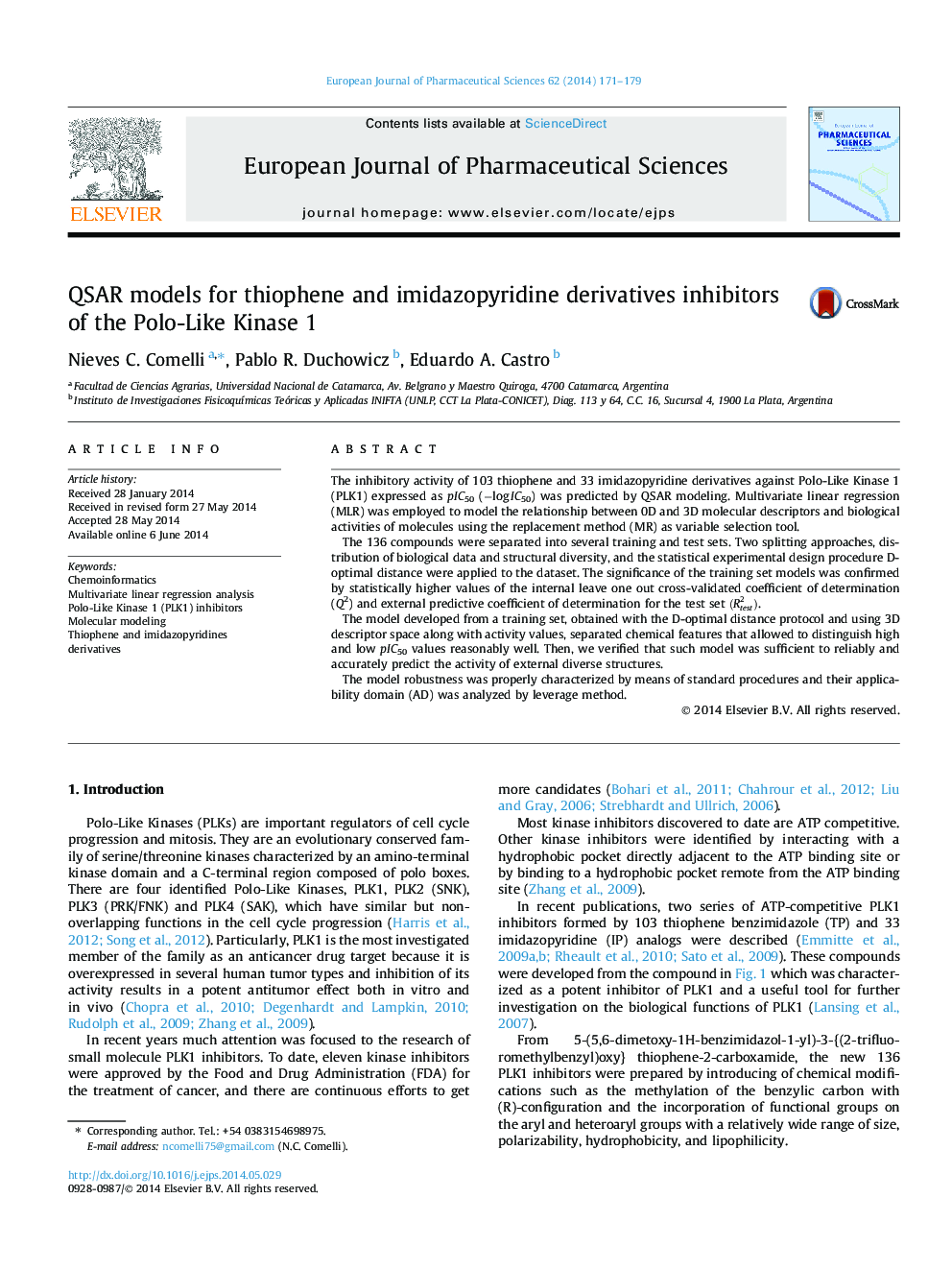| Article ID | Journal | Published Year | Pages | File Type |
|---|---|---|---|---|
| 2480395 | European Journal of Pharmaceutical Sciences | 2014 | 9 Pages |
The inhibitory activity of 103 thiophene and 33 imidazopyridine derivatives against Polo-Like Kinase 1 (PLK1) expressed as pIC50 (−log IC50) was predicted by QSAR modeling. Multivariate linear regression (MLR) was employed to model the relationship between 0D and 3D molecular descriptors and biological activities of molecules using the replacement method (MR) as variable selection tool.The 136 compounds were separated into several training and test sets. Two splitting approaches, distribution of biological data and structural diversity, and the statistical experimental design procedure D-optimal distance were applied to the dataset. The significance of the training set models was confirmed by statistically higher values of the internal leave one out cross-validated coefficient of determination (Q2) and external predictive coefficient of determination for the test set (Rtest2).The model developed from a training set, obtained with the D-optimal distance protocol and using 3D descriptor space along with activity values, separated chemical features that allowed to distinguish high and low pIC50 values reasonably well. Then, we verified that such model was sufficient to reliably and accurately predict the activity of external diverse structures.The model robustness was properly characterized by means of standard procedures and their applicability domain (AD) was analyzed by leverage method.
Graphical abstractHints for the inhibition of PLK1! The activity of two series of ATP-competitive PLK1 inhibitors was predicted by QSAR. The applicability domain was tested by the leverage approach and the predictive ability was confirmed by both internal and external validation.Figure optionsDownload full-size imageDownload high-quality image (149 K)Download as PowerPoint slide
